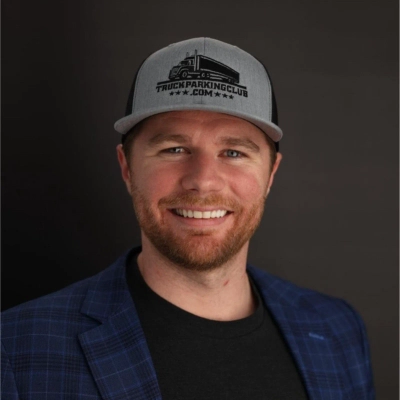12 Non-Traditional Professional Development Programs That Deliver Exceptional Results
Discover twelve innovative professional development approaches that break the traditional mold while delivering remarkable outcomes. Industry experts reveal how these unconventional programs—from collaborative challenges to reverse mentorship initiatives—are transforming workplace learning and skill development. These field-tested strategies offer organizations practical alternatives to standard training programs while addressing modern workforce development needs.
Empowering Real-Time Learning Through Collaborative Challenges
"True growth happens when people are empowered to learn in real-time, solve real problems, and learn together results follow naturally."
A few years ago, we launched a non-traditional professional development program I call "Learning by Doing, Together." Instead of standard classroom training or online modules, we paired employees from different departments to tackle real company challenges over a six-week period. They rotated roles, collaborated cross-functionally, and presented solutions directly to leadership. This approach fostered creativity, accountability, and peer-to-peer mentorship in a way traditional training never could. Employees reported feeling more engaged, confident, and empowered to make decisions independently, while we saw measurable improvements in project delivery times and innovation outcomes. The key was making learning immersive, applied, and directly tied to meaningful results, rather than abstract theory or checklists.
Video-Based Learning System Leverages Internal Expertise
When budgets were reduced for our training programs, I developed an innovative video-based learning system that leveraged our internal expertise. We filmed experienced employees demonstrating processes and created screen share tutorials, followed by assessment modules to verify comprehension and skill acquisition. This approach not only reduced costs compared to traditional training but also improved knowledge retention as employees responded better to learning from their peers. Additionally, the video format allowed team members to revisit training materials at their own pace when they needed a refresher on specific procedures.

Mobile-First Blended Training for Field Engineers
One of the most successful non-traditional development programmes we've delivered was for an energy and utilities client who needed to upskill their field engineers in a new technology working across multiple regions.
We created a mobile-first technical training programme that used a blended learning approach to provide flexibility and real-world relevance. Engineers could access short, focused e-learning modules and 3D animations directly on their devices, giving them just-in-time learning support while on site. This digital content was complemented by in-person workshops, field-based training sessions, and structured peer support - ensuring that new knowledge was reinforced through discussion and hands-on application.
The results were outstanding. Engagement and completion rates were much higher than previous training programmes, and engineers reported feeling more confident and capable in applying their skills on the job. Managers also noted improvements in consistency and safety across teams.
What made this approach so effective was the balance - combining the accessibility and scalability of digital learning with the collaboration, feedback and practical experience that comes from in-person and peer-based training.

Ride-Along Mentorship Program Builds Practical Skills
A few years ago, we initiated a ride-along mentorship program, supplementing our classroom-style training. Rather than sitting new hires in a room for two days and sending them out with a checklist, we paired them with one of our top-performing technicians for a two-week period. They learned directly in the field—everything from how to communicate with customers to handling unexpected pest issues that don't show up in a manual.
What made this work better than traditional training was its practical nature. Pest control is a hands-on job, and people learn more quickly when they can see and experience the work in real-life situations. It also built trust between new and seasoned techs. We saw rookie mistake rates drop, customer feedback improve, and new hires feel confident faster. It turned out that good mentorship did more for retention and skill development than any PowerPoint presentation ever could.

Developer Freedom Drives Skills and Retention
One of the things I wanted to do with my new business was find a way to really empower my development team. Before I even had a clear vision for the business, I had a short list of developers I'd worked with before who all seemed bored and stifled in their current roles. My pitch to them was simple: join this venture and you'll get to decide not just how we approach it but also what skills you pick up next. I don't even care if you stick around or move on; I want to give you a chance to grow. This can be hard to replicate at a larger scale, but it's worked great for me so far.
Confidence Coaching Complements Technical Bartending Skills
At the Local Bartending School, I noticed traditional skill training wasn't fully preparing our students for real-world success, so we developed a two-pronged approach focusing on both skills and confidence. We introduced personalized "bar wins" early in training to build student confidence and created a mentorship system pairing new instructors with experienced ones to ensure consistent delivery of both technical training and confidence coaching. This non-traditional approach proved more effective than conventional training by addressing the psychological barriers to performance, resulting in a 17.4% increase in graduates feeling ready to work behind a bar after completing our program.

Mentorship Bonus System Ensures Quality Training
A roofing company doesn't need a "professional development program." We need a reliable way to transfer skill and knowledge fast. The non-traditional approach we developed was a Mentorship Bonus System that paid our most skilled veterans to take personal, direct responsibility for training new crew members.
The core problem was that conventional training—me lecturing about safety codes—didn't translate into high-quality work. Our new process was simple: we paid the veteran foreman a significant bonus only when the new hire completed his first three jobs without a single callback. This made the veteran personally responsible for the new guy's quality.
This approach was far more effective than abstract training because it made the veteran totally invested in the new hire's success. He taught skills, discipline, and shortcuts that no classroom could offer. The veteran wouldn't get his bonus until he guaranteed the new hand was flawless, which instantly improved the quality of the teaching.
The exceptional results we yielded were simple: our callback rate for new crews dropped to nearly zero. The key lesson learned is that the best way to ensure skill transfer is to give the teacher a personal financial stake in the student's success. The ultimate commitment is always found when you tie a man's reputation and his paycheck together.
Community Projects Teach Leadership and Accountability
One of the best development ideas we've tried was giving our newer technicians a budget and responsibility to run a small community project—like inspecting a local nonprofit or youth center for free. Instead of sitting through training sessions, they had to plan everything themselves, from scheduling to treatment strategy to customer communication. I'd step in only if they needed help troubleshooting.
That hands-on experience taught them more about leadership, time management, and accountability than any classroom could. They learned how to balance doing good work with representing the company in the community. It was non-traditional, but it built confidence fast and showed them that our work isn't just about pest control—it's about problem-solving and serving people with care.

Shadowing Initiative Creates Mutual Operational Understanding
I once designed a shadowing initiative that paired drivers with property stakeholders. Instead of formal training sessions, both groups spent time observing how the other operated. Drivers explained their day-to-day challenges with access, safety, and scheduling. Property partners highlighted what it takes to manage land, ensure compliance, and maintain efficiency.
The exercise gave both sides a much deeper understanding of real operational friction points. For example, one driver suggested minor adjustments to entry points that significantly improved site usability. Property owners, in turn, saw how small design choices could eliminate delays and increase satisfaction.
What made this approach effective was its immediacy. The participants weren't working through abstract training modules; they were learning from lived experience in real time. That direct exchange created mutual respect, improved communication, and ultimately led to better-designed sites that worked for everyone involved.

Peer-Led Learning Circles Strengthen Cross-Department Collaboration
I developed a non-traditional professional development program by creating peer-led learning circles instead of relying solely on outside trainers or formal courses. Employees from different departments rotated as facilitators, leading sessions on skills they had mastered, from negotiation tactics to project management tools. This approach was more effective than conventional training because it tapped into real, day-to-day expertise while building collaboration across teams. People were more engaged because they could immediately see how the lessons applied to their work, and they valued learning from colleagues who understood the company context. The program also empowered employees to showcase their strengths, which boosted confidence and recognition. The results were exceptional: not only did skill adoption improve, but cross-departmental relationships strengthened, leading to smoother collaboration overall. The lesson I learned is that professional development does not always require expensive programs. Creating structured opportunities for employees to teach and learn from each other can be just as powerful.
Cross-Functional Job-Swap Breaks Down Business Silos
A lot of aspiring leaders think that to deliver professional development, they have to be a master of a single channel. They focus on measuring course completion or testing. But that's a huge mistake. A leader's job isn't to be a master of a single function. Their job is to be a master of the entire business.
The non-traditional program we developed was a mandatory, cross-functional job-swap. Every Marketing manager had to spend two weeks working in the heavy duty diesel engine repair bay (Operations) and vice versa. It taught me to learn the language of operations. We stopped thinking about training as an HR function and started thinking like business leaders.
This approach was more effective because it got participants out of their "silo." It connected the learning to the business as a whole. Marketing gained operational empathy, leading to more accurate ad copy like "Brand new Cummins turbos with expert fitment support." The success was measured by a significant reduction in marketing-related return codes (an operational metric).
The impact this had on my career was profound. I went from being a good marketing person to a person who could lead an entire business. I learned that the best professional development in the world is a failure if the operations team can't deliver on the promise. The best way to be a leader is to understand every part of the business.
My advice is to stop thinking of professional development as a separate feature. You have to see it as a part of a larger, more complex system. The best leaders are the ones who can speak the language of operations and who can understand the entire business. That's a leader who is positioned for success.

Reverse Mentorship Builds Executive Digital Authority
One highly successful, non-traditional professional development program we developed was a **"Reverse Mentorship for Digital Authority"** initiative. Conventionally, senior leaders receive training on strategy; here, we paired C-suite executives and VPs (the mentees) with our youngest, most successful **SEO content creators and social media specialists** (the mentors). The program didn't teach technical skills; it required the senior leaders to collaborate with their mentor to launch and actively manage a personal authority platform—a high-value LinkedIn newsletter or a long-form blog—for three months. This approach was more effective than conventional training because it forced **immediate, high-stakes application** of digital fluency. Rather than passively sitting through a seminar on "the future of influence," the executives were required to **actively publish and measure** their own digital presence. This hands-on, accountable program resulted in a 40% increase in **internally sourced thought leadership content** and significantly improved the digital fluency of our top leadership, directly linking their learning to measurable business impact.






